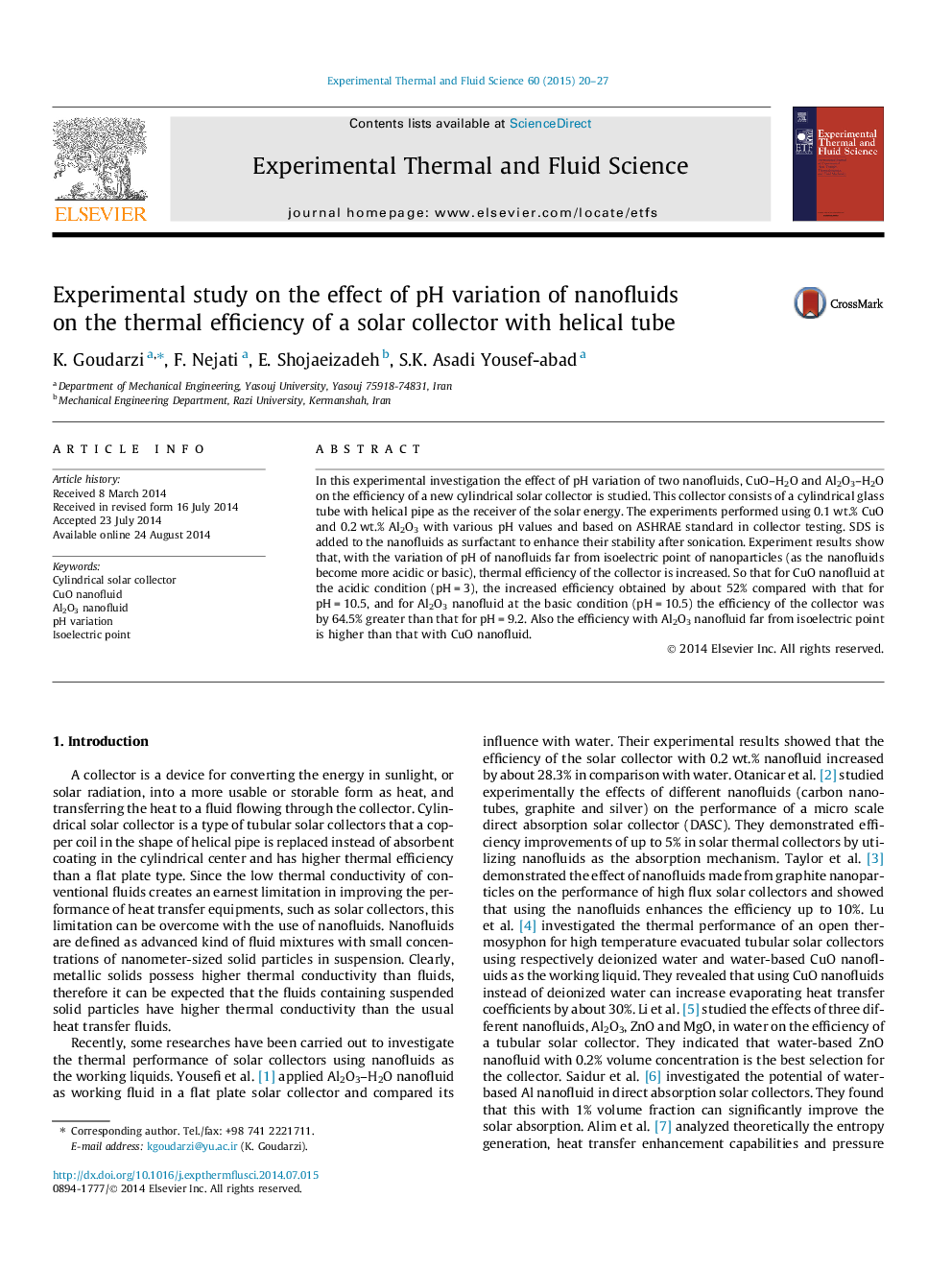| Article ID | Journal | Published Year | Pages | File Type |
|---|---|---|---|---|
| 7052375 | Experimental Thermal and Fluid Science | 2015 | 8 Pages |
Abstract
In this experimental investigation the effect of pH variation of two nanofluids, CuO-H2O and Al2O3-H2O on the efficiency of a new cylindrical solar collector is studied. This collector consists of a cylindrical glass tube with helical pipe as the receiver of the solar energy. The experiments performed using 0.1Â wt.% CuO and 0.2Â wt.% Al2O3 with various pH values and based on ASHRAE standard in collector testing. SDS is added to the nanofluids as surfactant to enhance their stability after sonication. Experiment results show that, with the variation of pH of nanofluids far from isoelectric point of nanoparticles (as the nanofluids become more acidic or basic), thermal efficiency of the collector is increased. So that for CuO nanofluid at the acidic condition (pHÂ =Â 3), the increased efficiency obtained by about 52% compared with that for pHÂ =Â 10.5, and for Al2O3 nanofluid at the basic condition (pHÂ =Â 10.5) the efficiency of the collector was by 64.5% greater than that for pHÂ =Â 9.2. Also the efficiency with Al2O3 nanofluid far from isoelectric point is higher than that with CuO nanofluid.
Related Topics
Physical Sciences and Engineering
Chemical Engineering
Fluid Flow and Transfer Processes
Authors
K. Goudarzi, F. Nejati, E. Shojaeizadeh, S.K. Asadi Yousef-abad,
